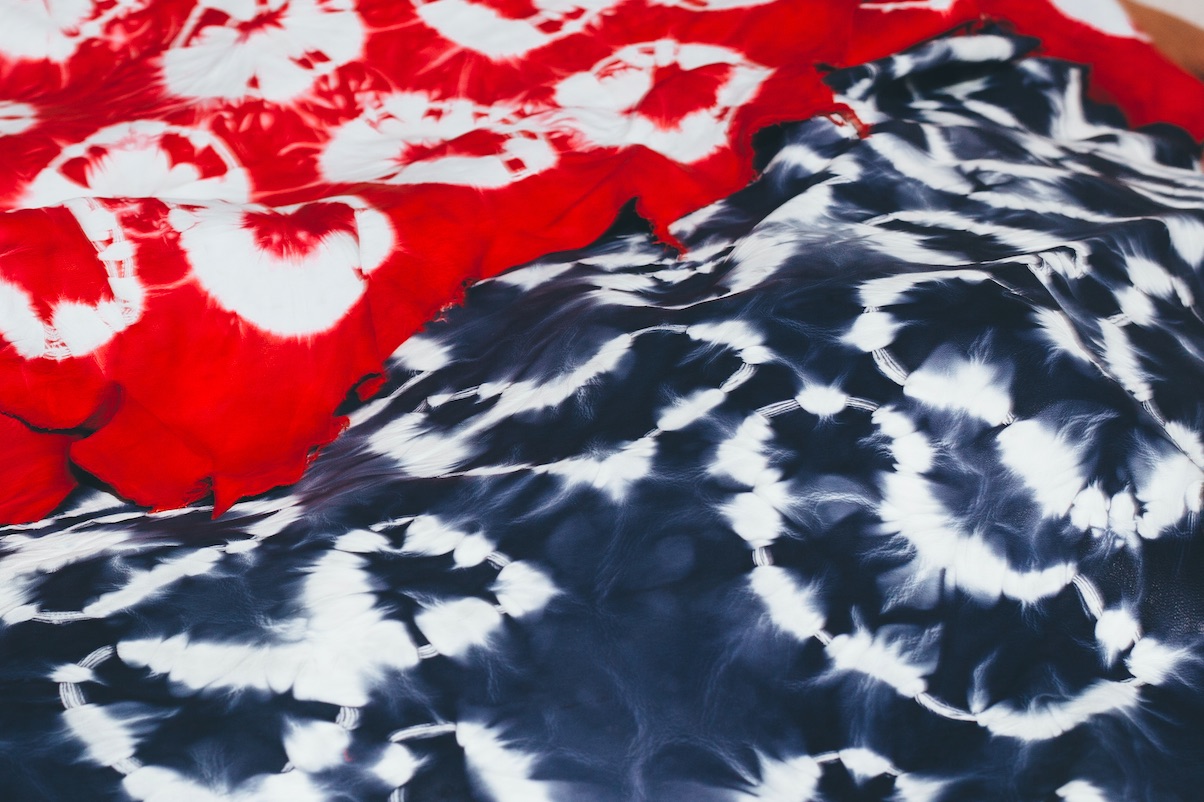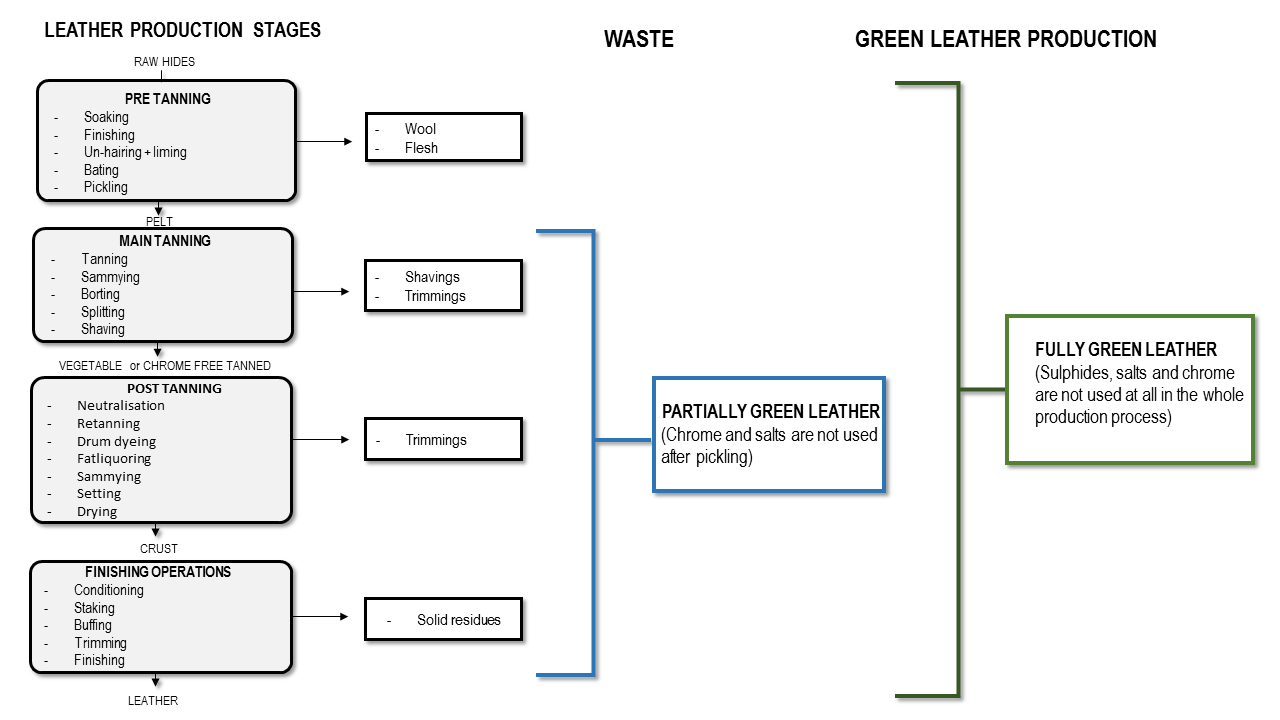Despite modern production methods, chrome tanning can still have a huge impact on the environment and people (workers of the tanneries, people leaving in the nearby communities and customers). HAFDE has implemented state-of-the-art chrome recycling techniques and a water treatment plant but it is nearly impossible, even in fully modernised and carefully managed facilities, to reclaim all of the pollutants generated by the tanning process, and even with fixers, oxidation of the chrome might occur after some years.
The solution is to produce green leathers whose environmental impact would be reduced by 95% compared to conventional chrome leathers. The term “green” leather refers to leather that is totally free of harmful chemicals, most importantly: chrome and sulphide. Sulphide is used in all tanning methods, both vegetable and chrome tanning; chrome is not used in vegetable tanning. Therefore, there are two forms of green leather: vegetable tanning with sulphides and vegetable tanning free of chrome and sulphides.
Currently HAFDE offers partially green leathers; however, it is their goal to be able to offer fully green leather in the future as it is more encompassing of environmental and health benefits. HAFDE has already carried out considerable research and investment on its options and has seen preliminary results for chrome (but not sulphides) free leathers that can match regular chrome-based leather.
1. Partially green leathers: green production starting from pickle pelt skins
HAFDE are already producing partially green leather, meaning chrome is not used after pickling, which is the final operation of the pre-tanning stage. The impact on the environment (compared to conventional chrome leather) is reduced after this stage of the leather production process. Before the pre-tanning stage the process still involves sodium sulphide, salts, acids and significant water consumption.
However, the issue of chrome and the need of using salts are removed in the following production stages. This tanning method also requires less water usage in the overall process than conventional chrome tanning. It can therefore be considered to be 40% cleaner than the traditional process. HAFDE is currently producing these types of leathers.
2. Fully green leathers: green production starting from raw skins
This method addresses the environmental issue from the start of the leather production process by completely removing chrome, sulphide and salts from the production process. It allows reducing and recycling waste to foster side activities and the creation of by-products which could enable more job creation for disadvantaged people (recovering wool, water and organic waste).
This process is 95% cleaner than the current chrome production process but requires heavy investments in new chemicals, new machinery and know how development.
Green Leather Production Processes and Sub Activities Derived from Waste Recycling


